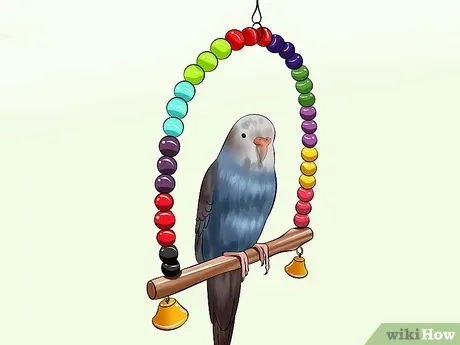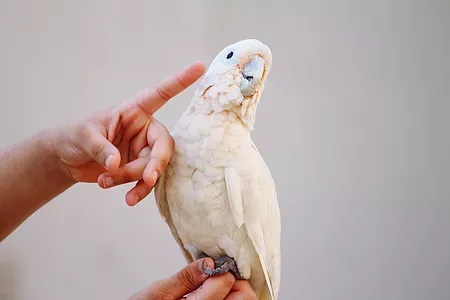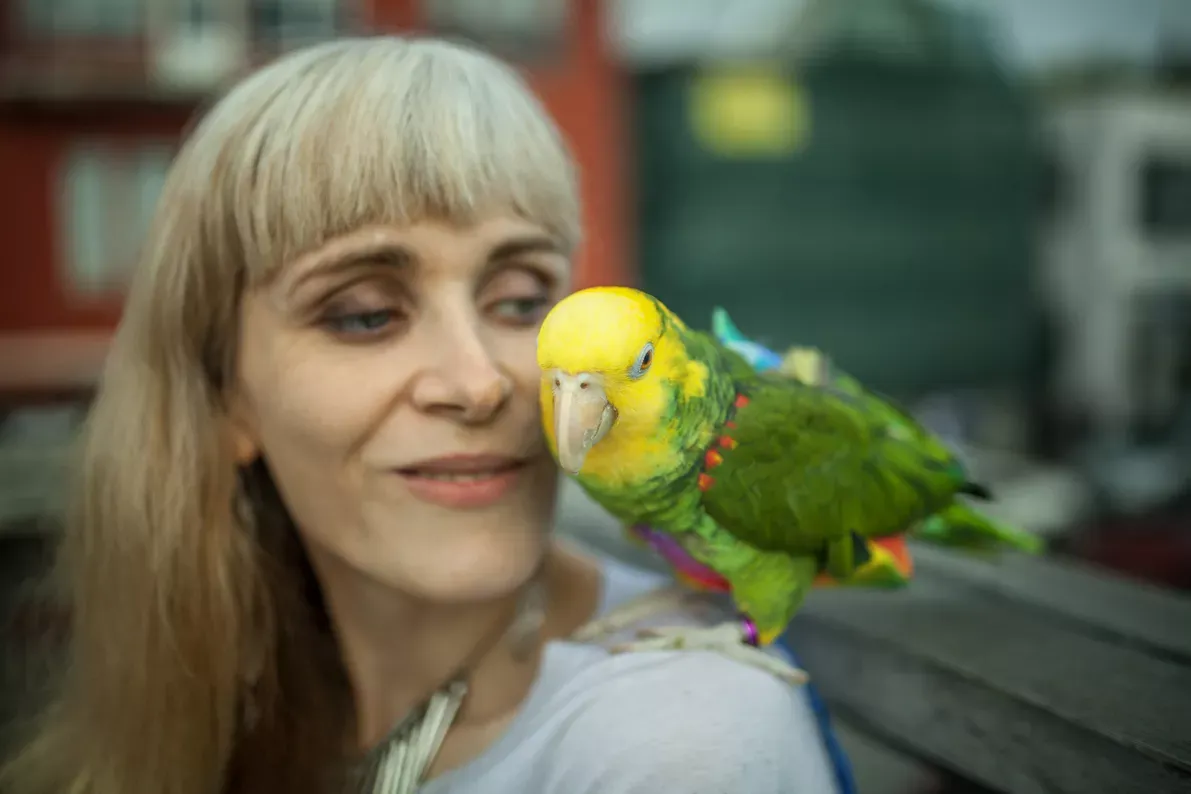Greetings to all steemians, and how was your day, i most say this i am really grateful to be a part of this community talking and learning about pets every day and night which is my favorite,so many people make a wrong chioce by picking a pet due to no understanding about them but just making a eye saw from families and friends, so today i will be giving you the notable point of mine to choose a good pet but before i start, a brief detail about guinea pigs pet will be shown below.
.jpg)
The budgerigar is a long-tailed, seed-eating parrot usually nicknamed the budgie , or in American English , the
parakeet . Budgies are the only species in the genus
Things about budgerigars:
.jpg)
- Types
Not many people realize that there are actually two distinct types of budgies―the traditional Budgerigar, hailing from Australia, and the larger English budgie, bred in England specifically for the show and the pet trade. While the two are clearly both budgies, there are differences when they're observed side by side. English budgies are usually 1 to 2 inches longer than their Australian counterparts and have larger heads and puffier feathers around their faces and crowns.
and puffier feathers around their faces and crowns.
.jpg)
- Budgerigars can talk
Budgies Can Learn to Talk Better Than Some Larger Parrots
There's no way to guarantee that your budgie, or any other parrot, will learn to "speak." However, budgies certainly have a knack for it, and many times they speak with greater clarity and broader vocabularies than larger parrot species such as macaws and cockatoos.
While their voices are small and gravelly-sounding, budgies have an impressive ability to pick up on human words and phrases, and even using them in proper context sometimes. They are a great choice for those new to bird ownership who want to own a talking parrot.
.jpg)
- Colour
Green Is the Only Natural Color for Budgies
Grey budgie standing apart from green budgies.
While people are normally accustomed to seeing a variety of colored budgies for sale in pet shops, the only natural color of budgies in the wild is the yellow/green variety. All other budgies, including the blue budgies, white budgies, and others, are color mutations bred specifically for the pet trade. There's nothing wrong with these birds, but don't expect to see a blue budgie in the wild.
How to play with budgies:
.jpg)
Budgerigars, or "Budgies," also known as pet or shell parakeets, are among the smallest parrots in the world and are native to Australia. These little parrots are popular due to their sociable, playful, and lively demeanor.
.jpg)
1 Buy budgie friendly toys. Budgies are very active birds and they enjoy having lots of toys to play with. However, be careful not to crowd your budgie’s cage with toys so he has lots of room to move around and hang out, as budgies consider their cage their home.[2]
Look for toys that are made of materials that your budgie can chew, like rope, and all natural materials. Chewing helps your budgie keep his beak nicely trimmed and strong and it also provides stimulation for him when he is hanging out in his cage. Birdie bagels are great as they can be slipped onto your budgie’s perch or hung up for chewing. You can also use lightweight toys or a small, squishy ball. Toys made of natural materials like wood, paper and plant materials are also good for your budgie, as they will mimic the types of things he might play with in the wild.
.jpg)
2 Get a play gym. Your budgie is prone to climbing and hanging off of objects. He will also likely enjoy ringing bells, scratching his head against objects, and chewing objects. Head to your local pet store and look for climbing stands and a play gym made for budgies. Look for a colorful gym made of wood with dowels, and ensure there are no toxic materials in the gym. There are also hanging jungle gyms that have two to three levels of perches, ropes, and swings.
There are also safe climbing nets made for budgies that you can install underneath the play gym. Your budgie may also enjoy climbing up, down, and through the net as another kind of toy.

3 Install a play swing. Most budgies enjoy swinging and hanging out on a play swing. You can find play swings for budgies at your local pet store or make your own swing with two dowels and a piece of rope. Install the play swing in your budgie’s cage so he can move around safely on the swing unsupervised.[4]
Some swings have bells, which are a real treat for budgies as they love to ring bells. There are also swings made of rubber like material, which are soft on your budgie’s feet and fun to bite and chew on.
.jpg)
4 Prepare the room if you are going to let your budgie fly around or play outside of his cage. If you are going to let your budgie fly around the room or play on a swing or gym outside of his cage, you should always prepare the room first. You should also never let your budgie out of his cage unsupervised, as he can get injured or end up chewing on something that might make him ill or harm him. Before you let your budgie out of his cage:
Cover all the windows and mirrors in the room with sheets or towels. This will prevent your budgie from flying into them.
Close all the doors and windows in the room. Let everyone in the home know the budgie is being let out of his cage and they should not open any doors or windows.
Remove any other animals, such as dogs and cats, from the room.
Move any poisonous plants into another room.
Switch off all ceiling fans and regular fans to prevent your budgie from getting injured. Ensure there are no hot surfaces, such as on a heater or a stove.
Remove or cover any containers with water or liquid, such as fish bowls or aquariums.
Unplug electrical cords and hide them so your budgie cannot chew on them.
How to Train Your budgies to Sing
- Start With Speech
.jpg)
Teaching your feathered friend to perform bird tricks can be fun, but it is important that you don't expect too much from your parrot. For example, some individual birds, even those whose species is known for talking, simply won't mimic anything.
Before you set out to teach your bird a song, you need to determine if your bird has the ability (and the will) to talk. If your bird is already saying a few words, then you're good to go—if not, you should start with encouraging speech in your bird, and then move along to incorporating the musical aspect at a later date.
PARROTS & PET BIRDS PET BIRD BEHAVIOR & TRAINING

How to Train Your Parrot to Sing
Written by Alyson Kalhagen
Updated 06/27/19
Close-up of hand holding bird
Hussain Al-Najar / Getty Images
It's a well-known fact that parrots are capable of mimicking human speech, but what many bird owners don't realize is that the same methods for teaching birds to talk can be used to teach them how to sing. Birds naturally try to duplicate the tones and notes of the sounds that they are learning.
It will take some practice and patience, but if your parrot can talk, you should be able to teach it to sing.
Choose an Appropriate Training Area
Cockatoo on white sofa.

Images say more about me than words. / Getty Images
The location where you train your bird can influence the success or failure of your training sessions. Choosing an appropriate training area isn't as simple as it may sound and it can be rather challenging to get it just right. Keep in mind that your bird will be most agreeable in an area that is neither too foreign nor too familiar.
Choose a room or part of the house that is away from the bird's cage and areas where it normally spends most of its time, but that is also free of major foot traffic. Make sure that the area is free of clutter and distractions, and that the room has secure doors and windows to eliminate the risk of a fly-away. And avoid any room that has mirrors, as most parrot owners know, these birds can't resist their reflections.
Pick a Song Your Bird Likes

Birds that enjoy mimicking sounds are often drawn to certain noises more than others. If you are setting out to teach your bird to sing a song, it's a good idea to pay attention to the sorts of sounds that your bird seems to like. Try putting on the radio to see how your bird responds to different types of music. Is it more interested in songs with a lot of bass, or higher-pitched sounds? Does it respond more to male voices or female voices?
You may even discover certain artists or genres that your bird seems to enjoy more than others. Choosing a fun, upbeat song to teach your bird is normally the best way to get your feathered friend singing quickly and accurately.
Teaching your bird to sing isn't all that different from teaching your bird to talk. It's important not to rush your pet. Start slowly, repeating just the first few words of a tune, and then incorporate more as your bird learns. Try to hold the training sessions at the same time every day.
It also can help to use audio editing software to create a loop of the first line or two of a song that you can play over and over for your bird.
This way, your pet will begin to recognize the way that the sounds and tones fit together and will be able to process exactly what types of vocalizations are needed in order to reproduce the sounds that it hears.
All thanks to everyone reading and following this article you should be able to make a right choice and to care of you pets in other to make it feel very happy when your are at home.
Special thanks to
@steemcurator01
@steemcurator02
@steemcurator03
@booming01
@booming02
@booming03
@booming04
@team
